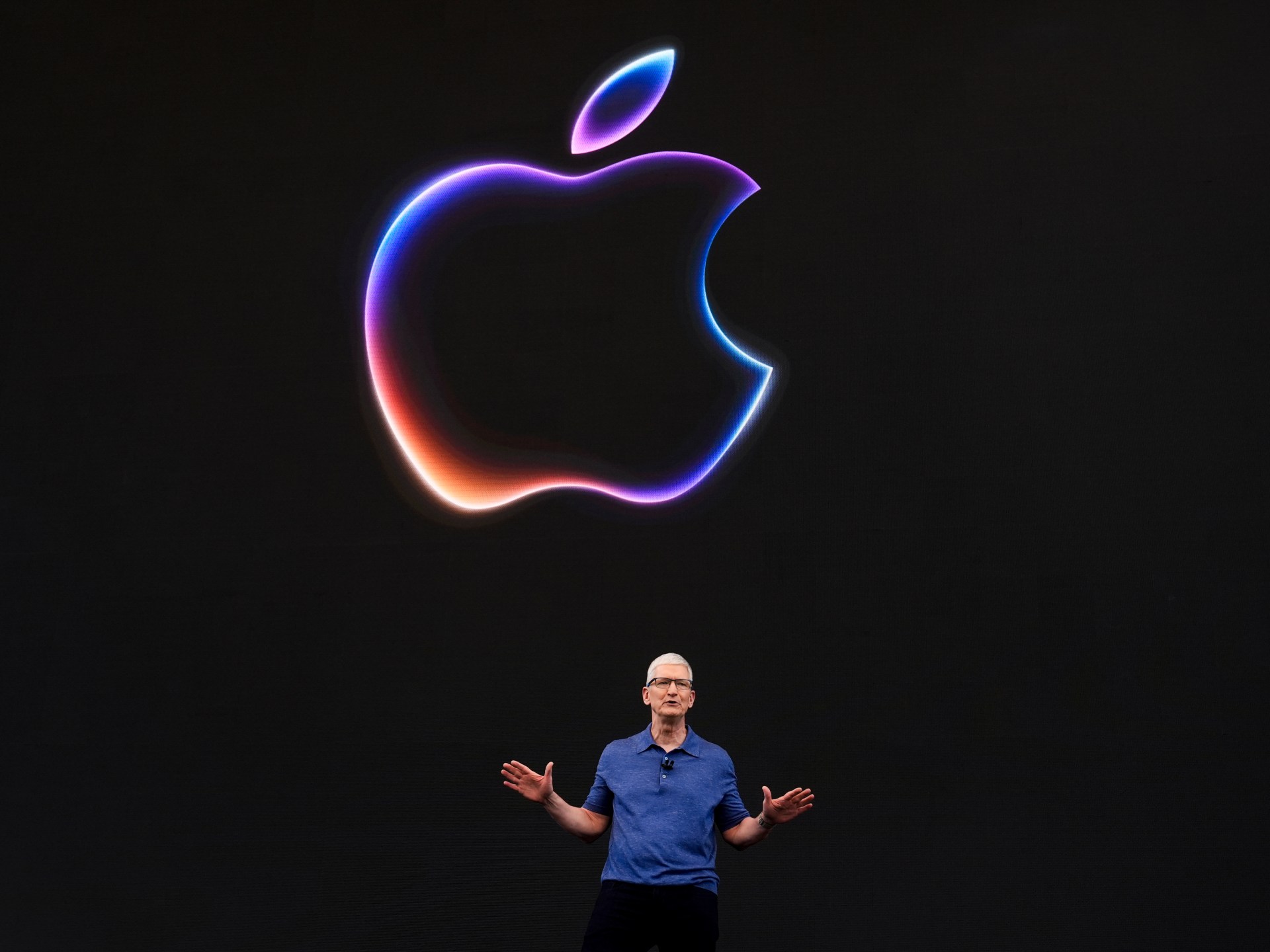Will Apple's AI Strategy Lead Or Lag?

Table of Contents
Apple's Strengths in the AI Arena
Apple's strategic positioning in the AI landscape is far from insignificant. Several key strengths underpin its potential for future AI dominance.
Focus on Privacy and User Data
Apple's unwavering commitment to user privacy presents a significant competitive advantage in the AI world, where vast datasets are essential for training sophisticated machine learning models. This privacy-focused approach fosters trust, a critical element in attracting users increasingly concerned about data security and responsible AI practices.
- Differential privacy techniques: Used in iOS and macOS, these techniques limit the amount of identifiable data collected while still allowing for the training of effective AI models. This approach minimizes the risk of individual user data breaches.
- On-device processing: Apple prioritizes on-device processing, meaning much of the AI processing happens directly on the user's device, minimizing the amount of data sent to Apple's servers. This further strengthens user privacy and reduces reliance on cloud infrastructure.
- Strong brand reputation for privacy: Apple's established reputation for prioritizing user privacy enhances user confidence in its AI initiatives. This trust translates into higher adoption rates for AI-powered features.
Strong Hardware Ecosystem
Apple's powerful hardware ecosystem, encompassing iPhones, iPads, Macs, and Apple Watches, provides a robust foundation for running sophisticated AI algorithms and applications. The seamless integration across devices further enhances the user experience.
- A-series and M-series chips: The A16 Bionic chip and its successors, along with the powerful M-series chips in Macs, offer unparalleled processing power for on-device machine learning, enabling advanced features and faster performance.
- Apple silicon Macs: The transition to Apple silicon has unlocked significant AI capabilities on desktop and laptop computers, enabling professionals and consumers alike to leverage powerful AI tools.
- Seamless cross-device integration: The seamless integration of AI features across Apple's devices ensures a consistent and user-friendly experience, making AI-powered features more accessible and intuitive.
Established User Base and App Ecosystem
Apple boasts a massive and incredibly loyal user base, representing a readily available market for AI-powered products and services. This large user base, combined with the robust App Store ecosystem, offers a powerful platform for deploying and scaling AI applications.
- Immediate access to new features: Apple's existing user base provides an immediate and substantial market for new AI features and applications.
- Third-party developer opportunities: The App Store provides a fertile ground for third-party developers to create and distribute AI-powered apps, expanding the range of available AI tools.
- High user engagement: Apple's users are known for their high engagement with Apple products and services, making them more receptive to the adoption of new AI features.
Apple's AI Challenges and Potential Weaknesses
Despite its strengths, Apple faces significant challenges in its pursuit of AI leadership.
Relatively Closed Ecosystem
Apple's famously closed ecosystem, while beneficial in certain aspects, can hinder the breadth of AI development and collaboration. This closed approach can limit access to crucial resources and talent.
- Limited access to open-source tools: The reliance on proprietary technologies and frameworks can restrict access to open-source AI tools and datasets, potentially slowing down innovation.
- Challenges in attracting top AI talent: Compared to more open platforms, attracting and retaining top AI talent can be more challenging due to the perceived limitations of working within a closed ecosystem.
- Slower pace of innovation: The closed nature of the ecosystem can sometimes lead to a slower pace of innovation compared to companies employing more open development approaches.
Lack of a Clear, Unified AI Strategy
Compared to its competitors, Apple's AI strategy appears less defined and more fragmented across its various product lines. This lack of a centralized, cohesive strategy could hinder its overall progress.
- Need for more cohesive integration: There's a need for more seamless integration of AI across Apple's devices and services, creating a more unified and powerful AI experience.
- Absence of a centralized AI platform: Unlike Google's TensorFlow or Amazon's SageMaker, Apple lacks a prominent, centralized AI platform that could accelerate development and collaboration.
- Potential for missed opportunities: A less aggressive and less clearly defined approach to AI development could lead to missed opportunities in the rapidly evolving AI landscape.
Competition from other Tech Giants
Apple faces stiff competition from tech giants like Google, Microsoft, and Amazon, all of whom have invested heavily in AI and have made significant strides in the field.
- Differentiation is key: Apple needs to clearly differentiate its AI offerings from its competitors, focusing on unique features and superior user experience.
- Keeping pace with generative AI: The rapid advancements in generative AI put pressure on Apple to innovate and keep pace with the competition.
- Maintaining competitive edge: Maintaining a competitive edge in the face of aggressive market expansion by rivals requires continuous innovation and strategic adaptation.
Conclusion: Will Apple Lead or Lag in the AI Race?
Whether Apple's AI strategy will ultimately lead or lag remains uncertain. While the company possesses considerable strengths—a focus on privacy, powerful hardware, and a massive user base—it also faces challenges related to its closed ecosystem, a potentially fragmented strategy, and fierce competition. Apple's success in the AI arena hinges on its ability to overcome these challenges and effectively leverage its existing strengths. The coming years will be pivotal in determining whether Apple can truly establish itself as an AI leader or remain a significant, yet perhaps secondary, player in this transformative technological revolution. To stay abreast of Apple's progress and its impact on the future of AI, continue monitoring news and analysis of Apple's AI strategy and its broader implications for the tech industry.

Featured Posts
-
 Betting On The Oilers Kings Series Odds And Expert Analysis
May 09, 2025
Betting On The Oilers Kings Series Odds And Expert Analysis
May 09, 2025 -
 Anchorage Welcomes Iditarod 2025 Ceremonial Start Draws Huge Crowds
May 09, 2025
Anchorage Welcomes Iditarod 2025 Ceremonial Start Draws Huge Crowds
May 09, 2025 -
 Overtaym Drama Vegas Golden Nayts Pobezhdaet Minnesotu V Pley Off
May 09, 2025
Overtaym Drama Vegas Golden Nayts Pobezhdaet Minnesotu V Pley Off
May 09, 2025 -
 Middle Management Their Crucial Role In Organizational Effectiveness And Employee Development
May 09, 2025
Middle Management Their Crucial Role In Organizational Effectiveness And Employee Development
May 09, 2025 -
 Indonesia Reserve Holdings Fall Impact Of Rupiah Depreciation
May 09, 2025
Indonesia Reserve Holdings Fall Impact Of Rupiah Depreciation
May 09, 2025
Latest Posts
-
 Exploring The Relationship Between Dakota Johnsons Roles And Chris Martins Influence
May 09, 2025
Exploring The Relationship Between Dakota Johnsons Roles And Chris Martins Influence
May 09, 2025 -
 Has Chris Martins Influence Shaped Dakota Johnsons On Screen Persona
May 09, 2025
Has Chris Martins Influence Shaped Dakota Johnsons On Screen Persona
May 09, 2025 -
 Dakota Johnsons Career Path The Chris Martin Factor
May 09, 2025
Dakota Johnsons Career Path The Chris Martin Factor
May 09, 2025 -
 Is Chris Martin Influencing Dakota Johnsons Acting Roles
May 09, 2025
Is Chris Martin Influencing Dakota Johnsons Acting Roles
May 09, 2025 -
 Dakota Johnson And Chris Martin A Look At Her Career Choices
May 09, 2025
Dakota Johnson And Chris Martin A Look At Her Career Choices
May 09, 2025
